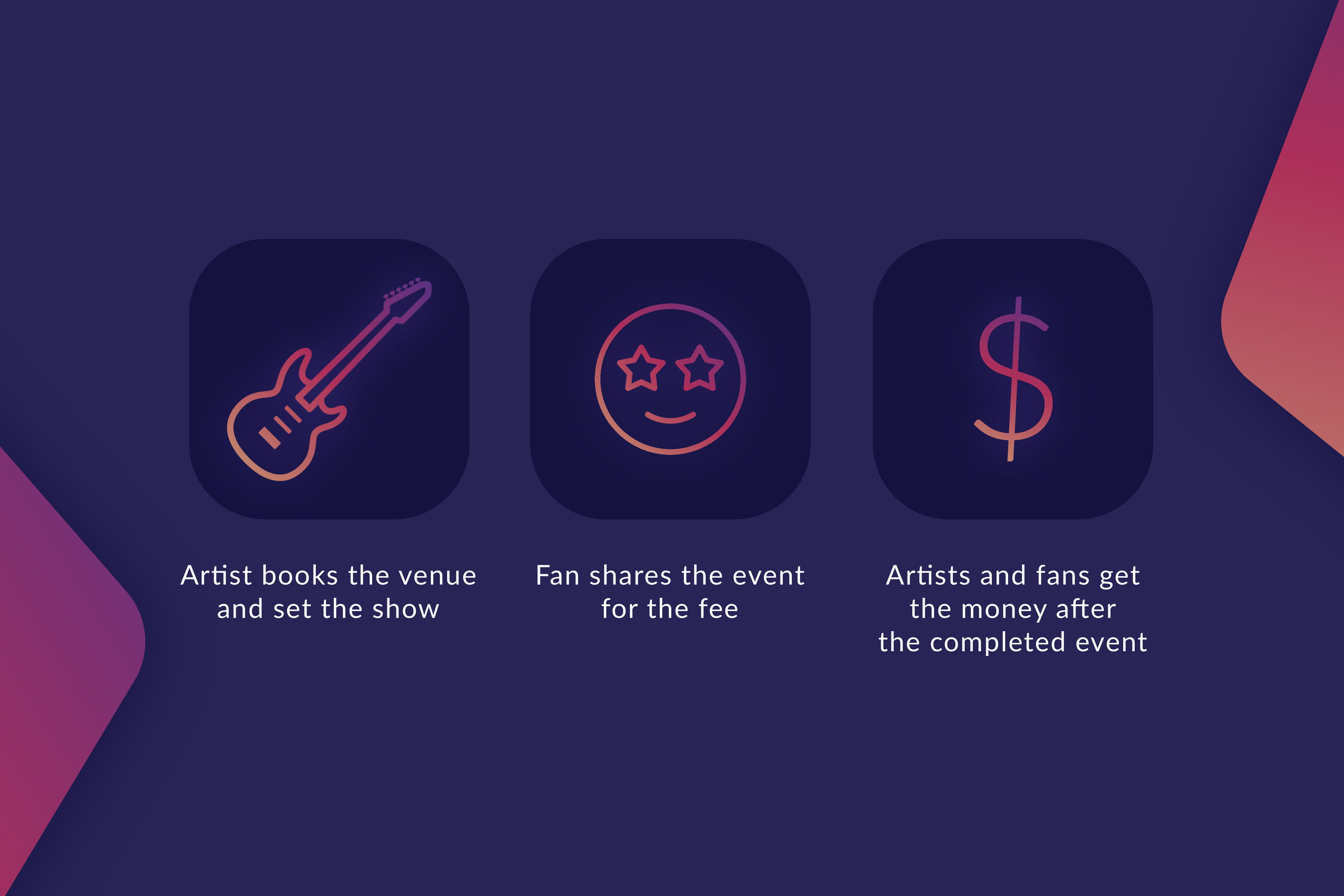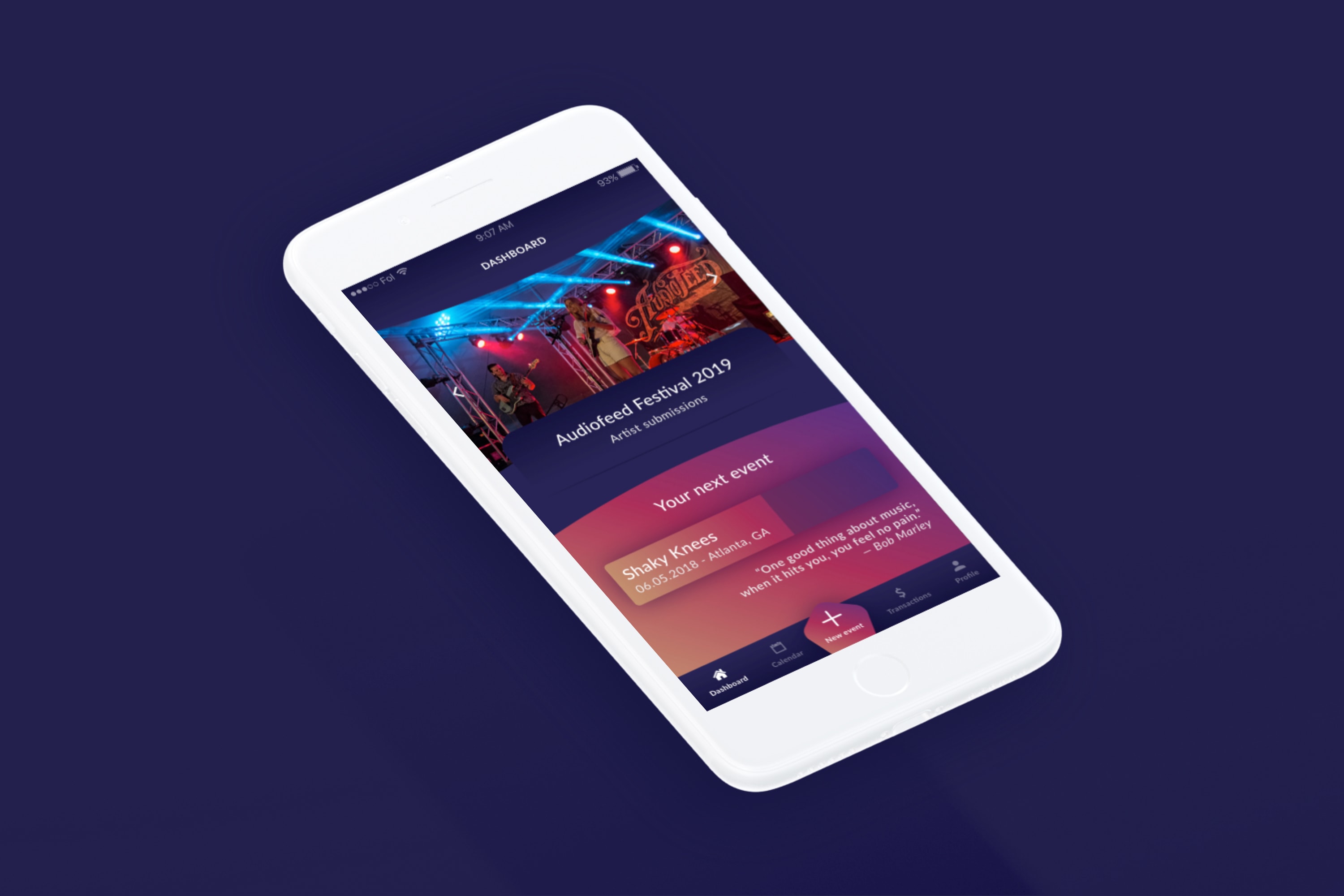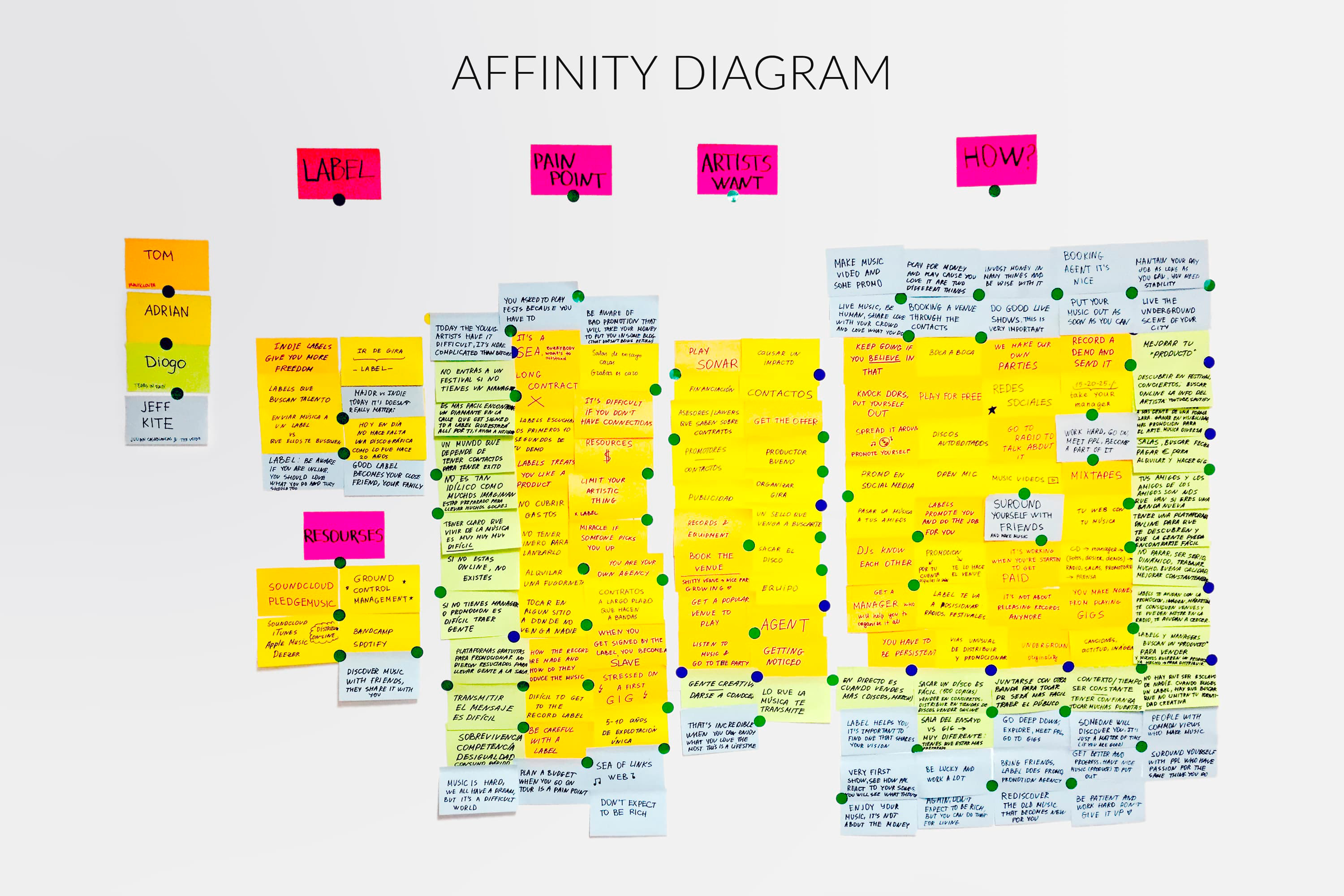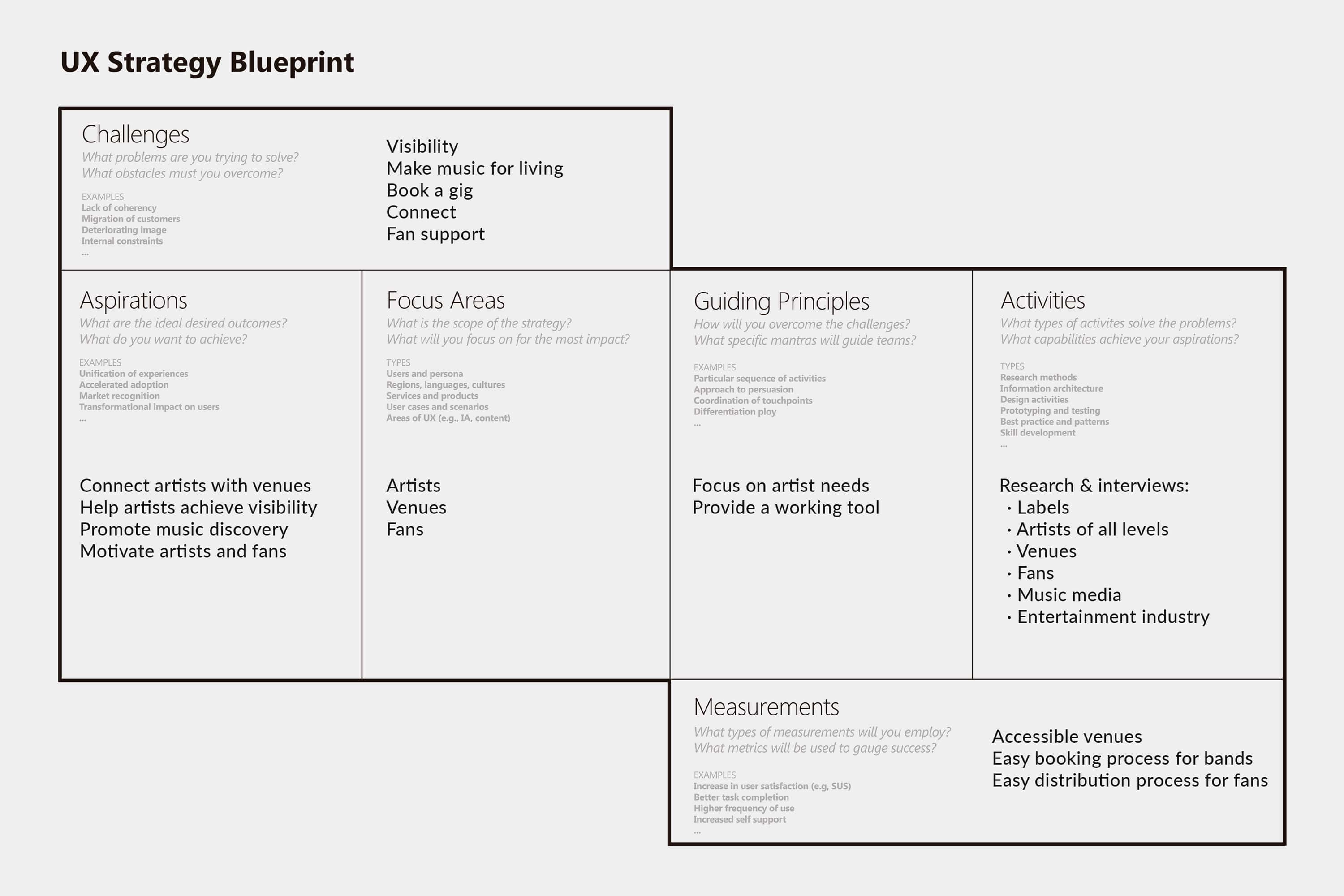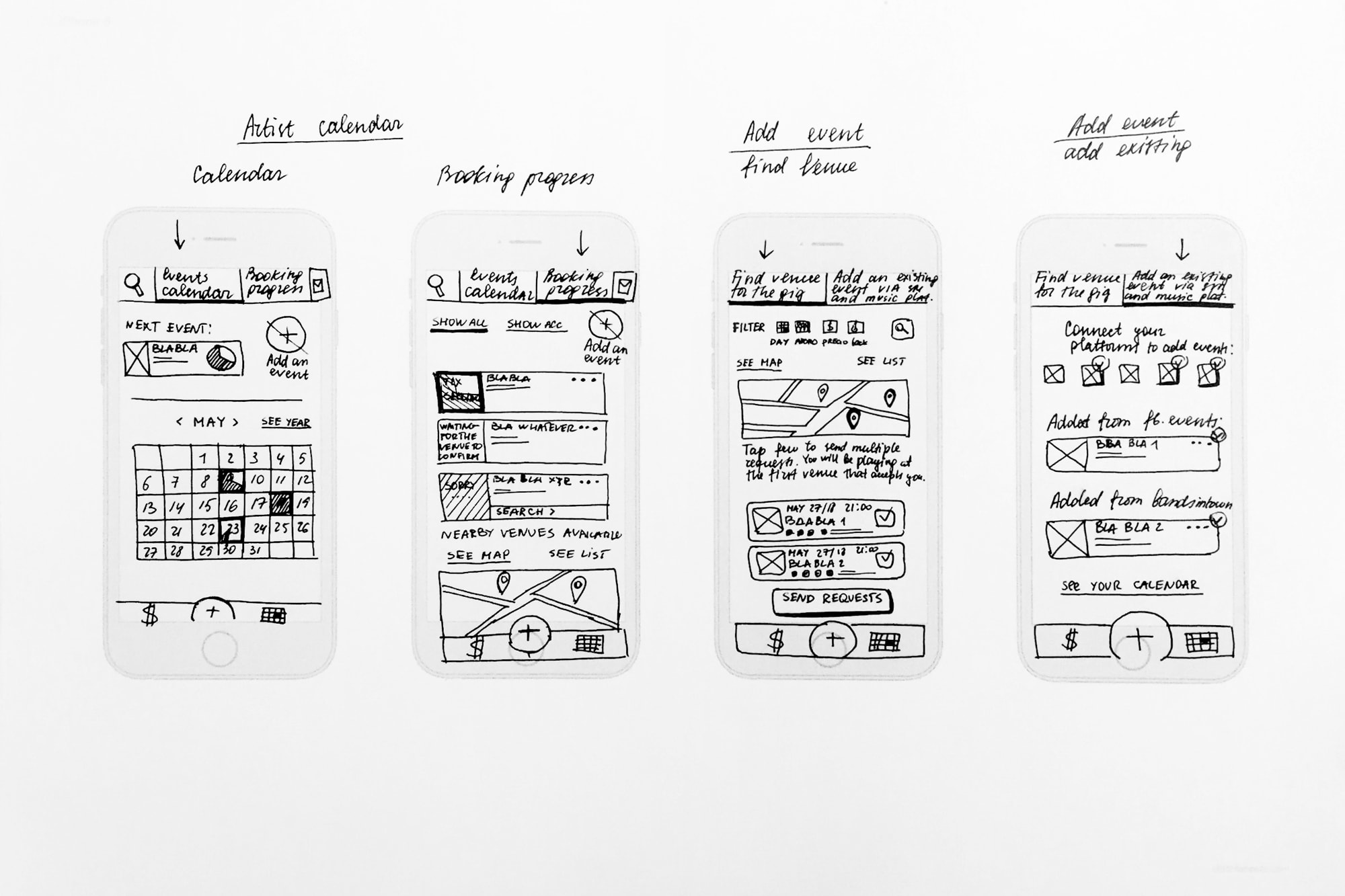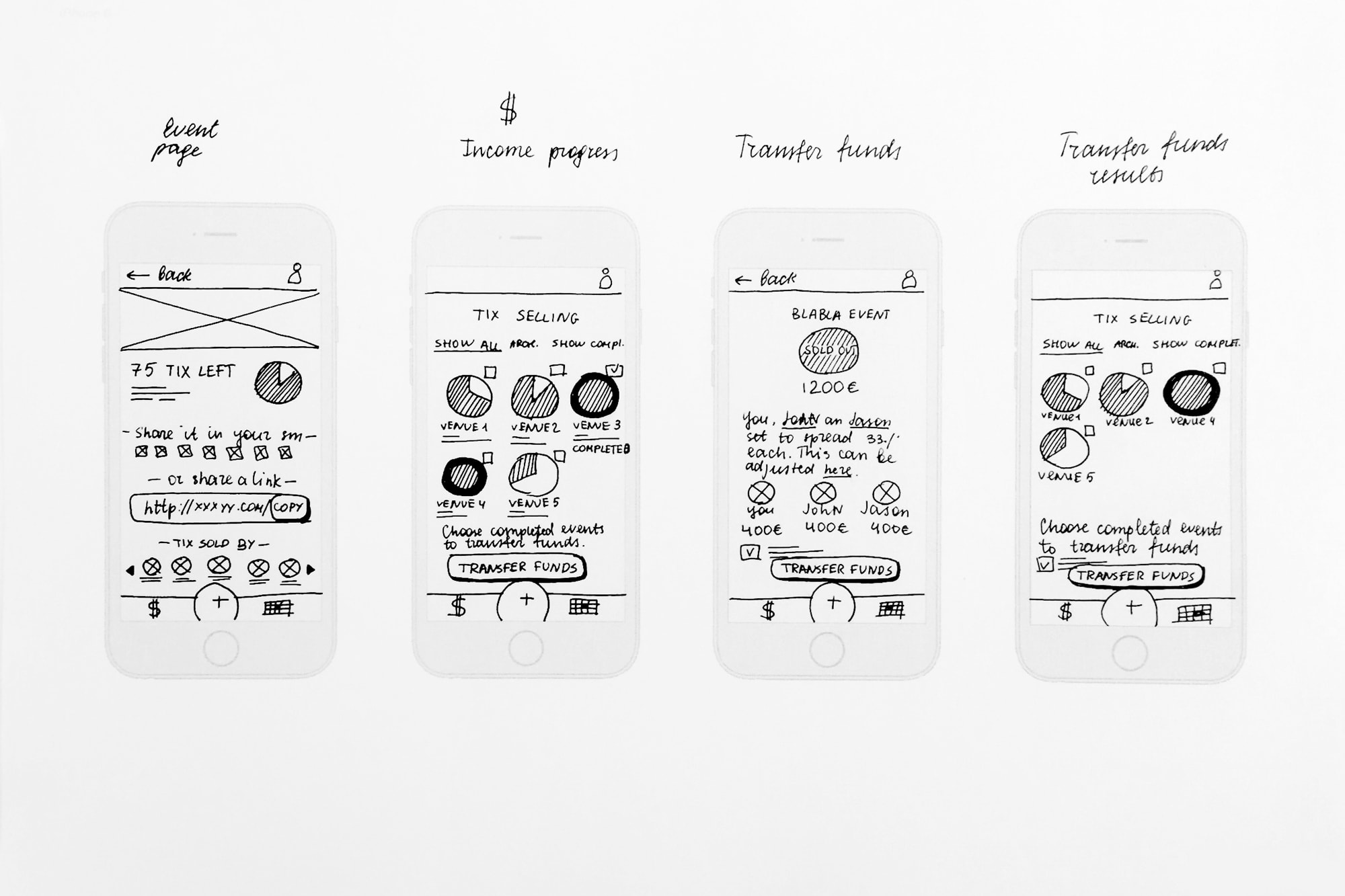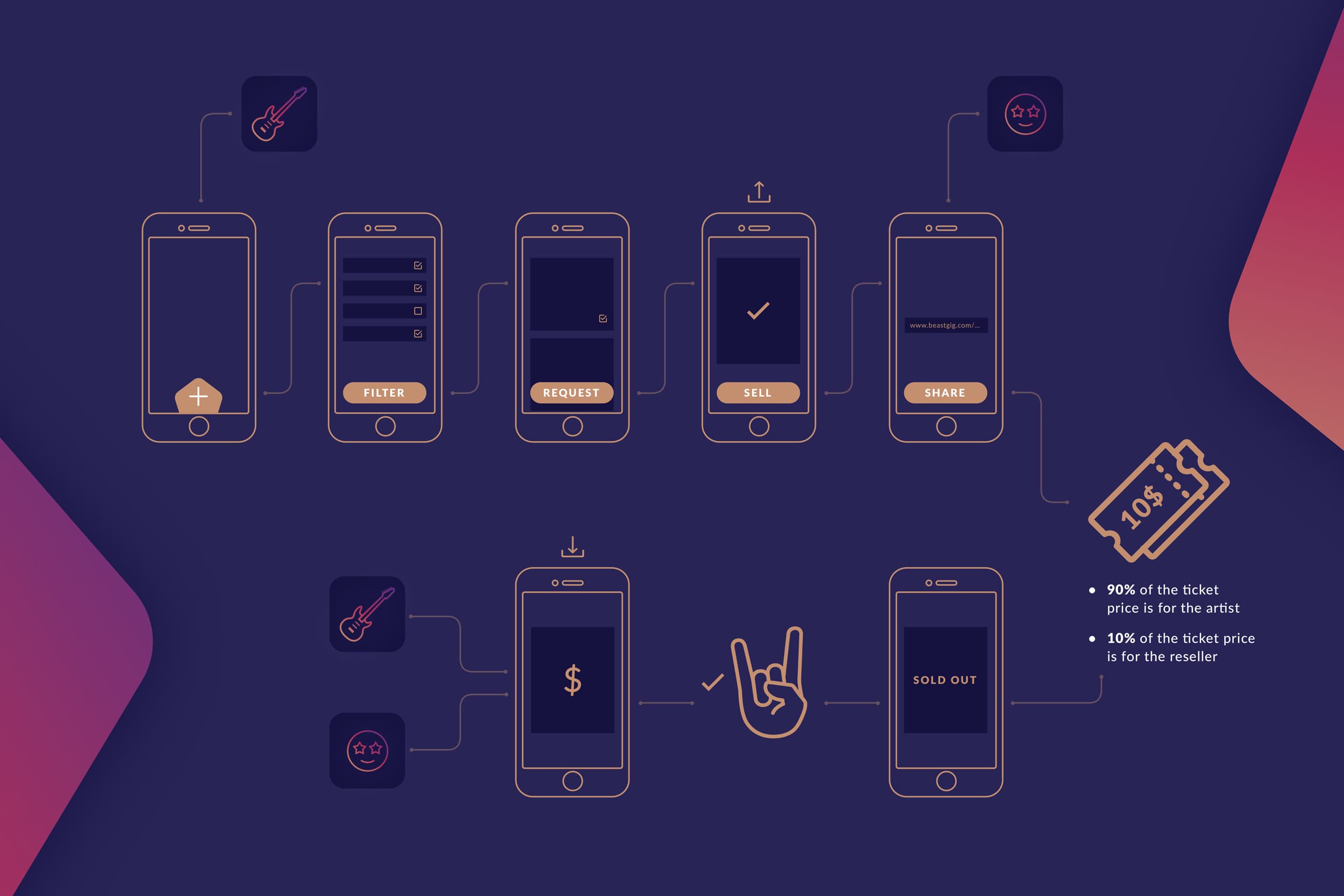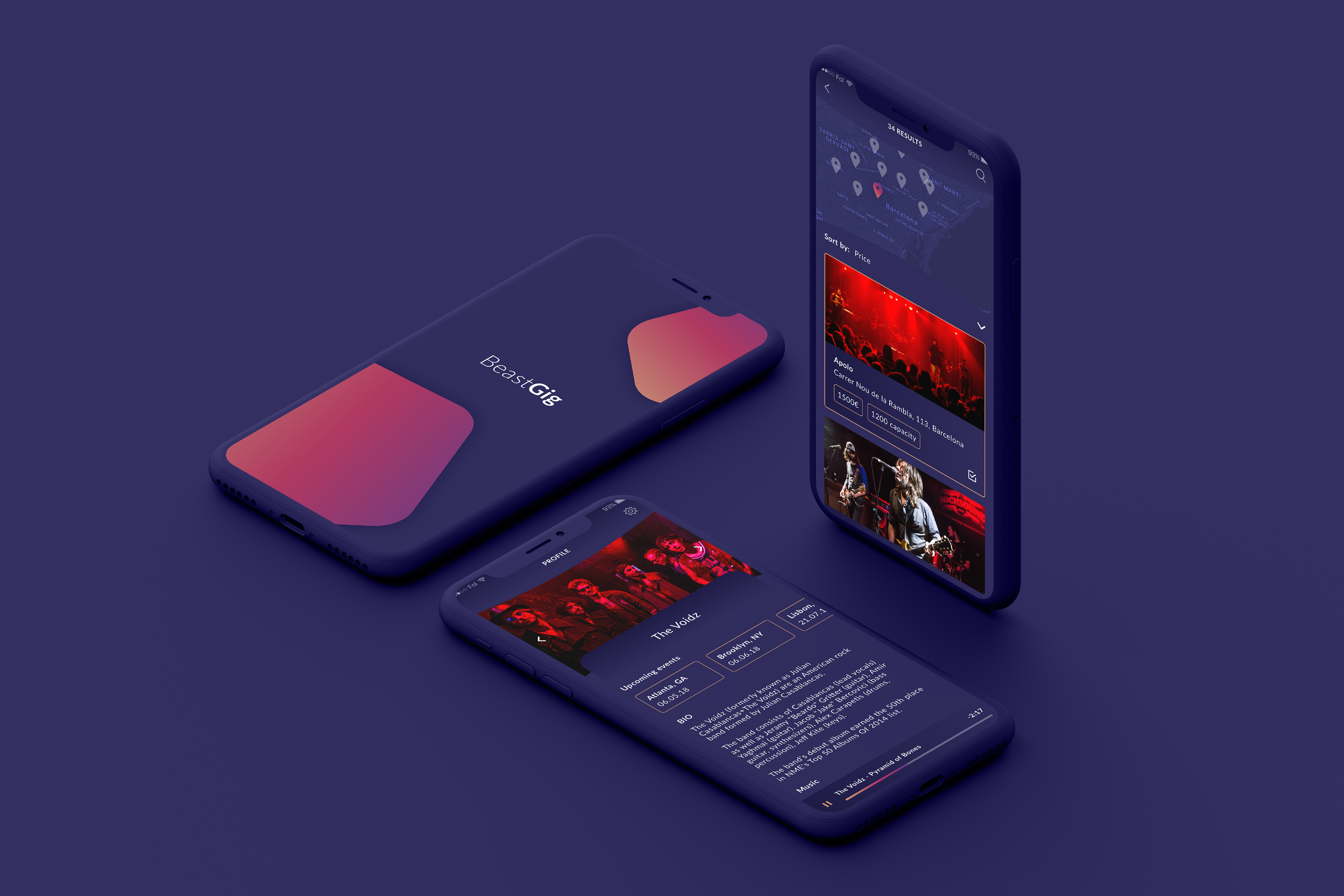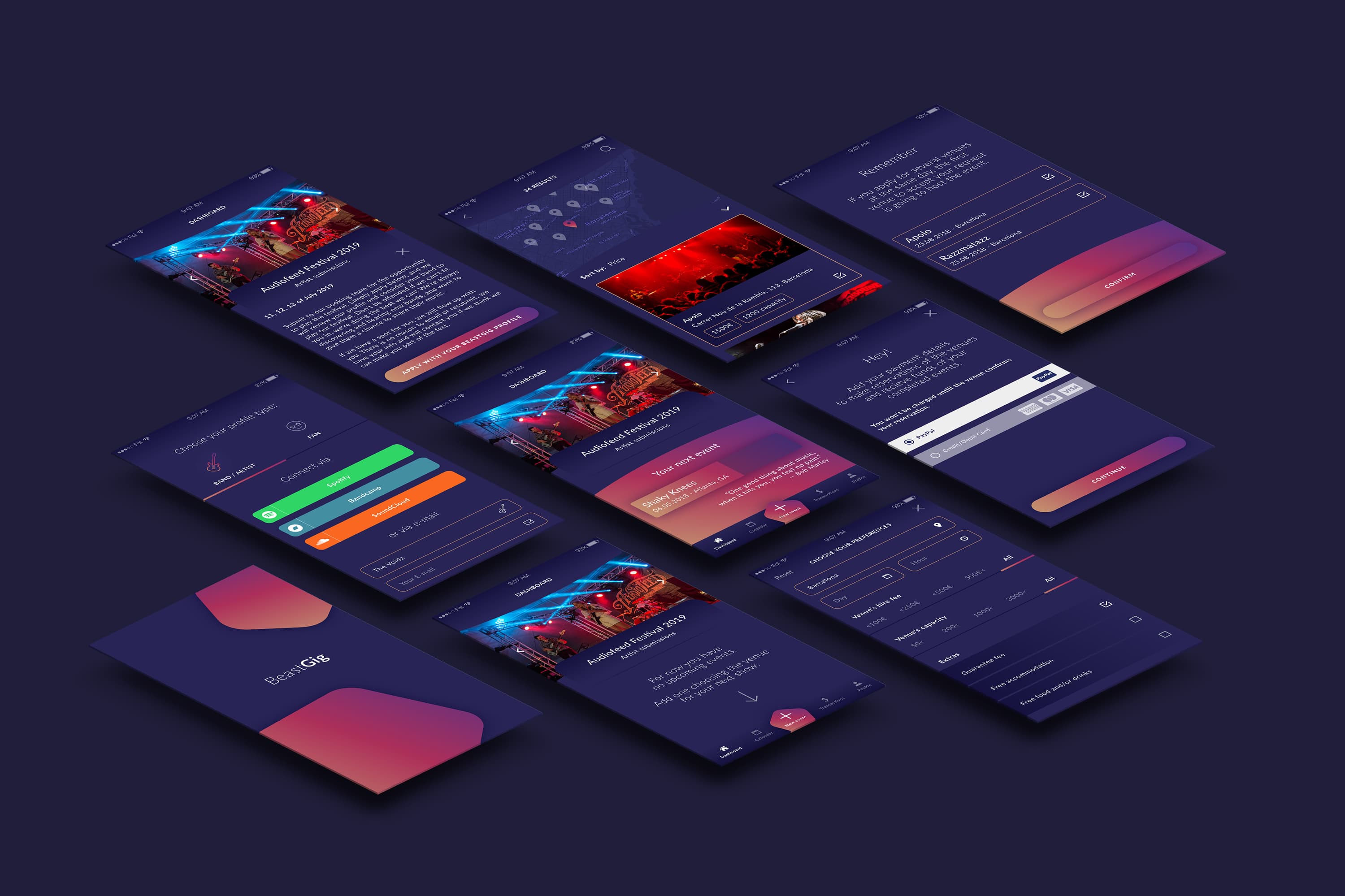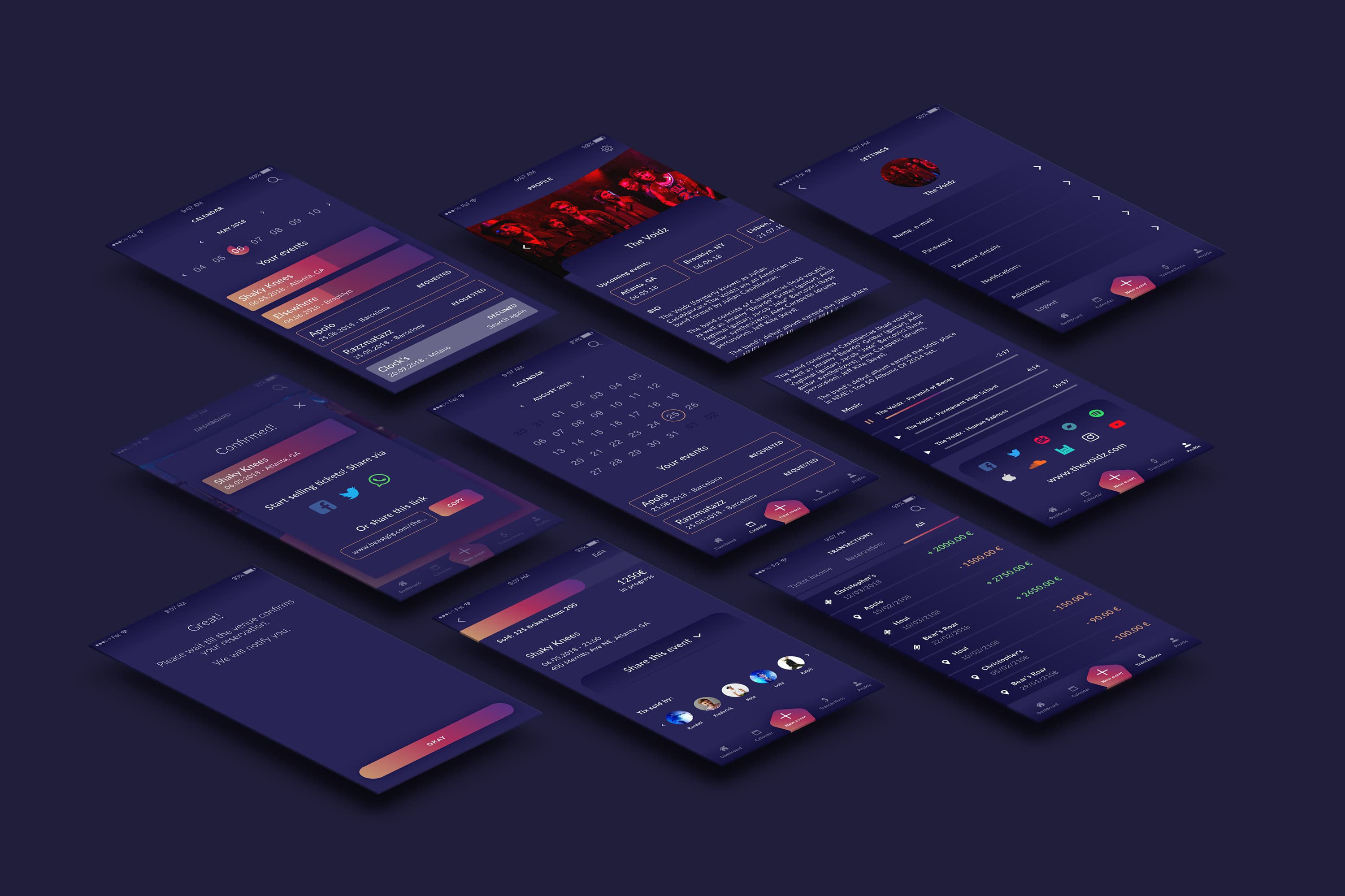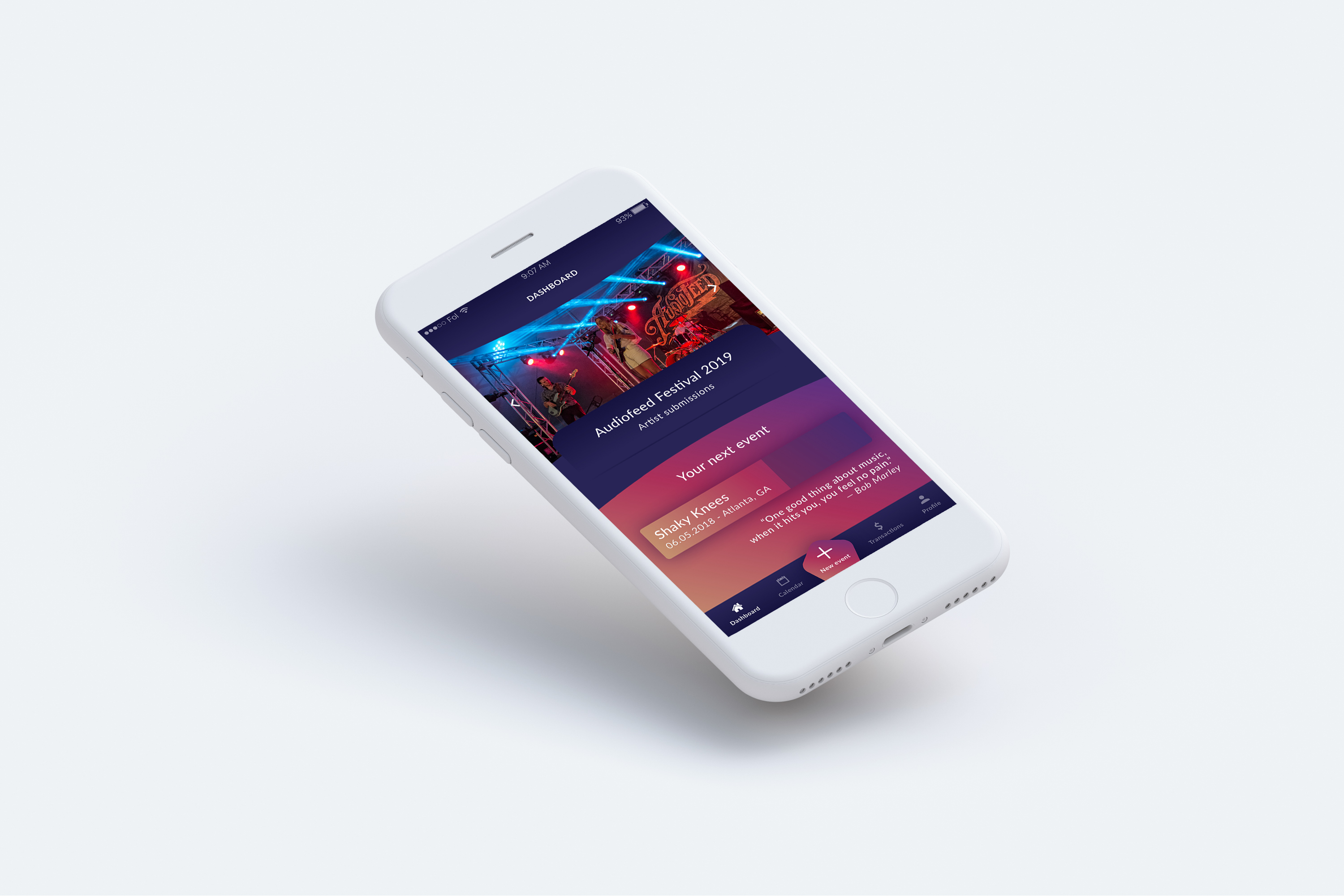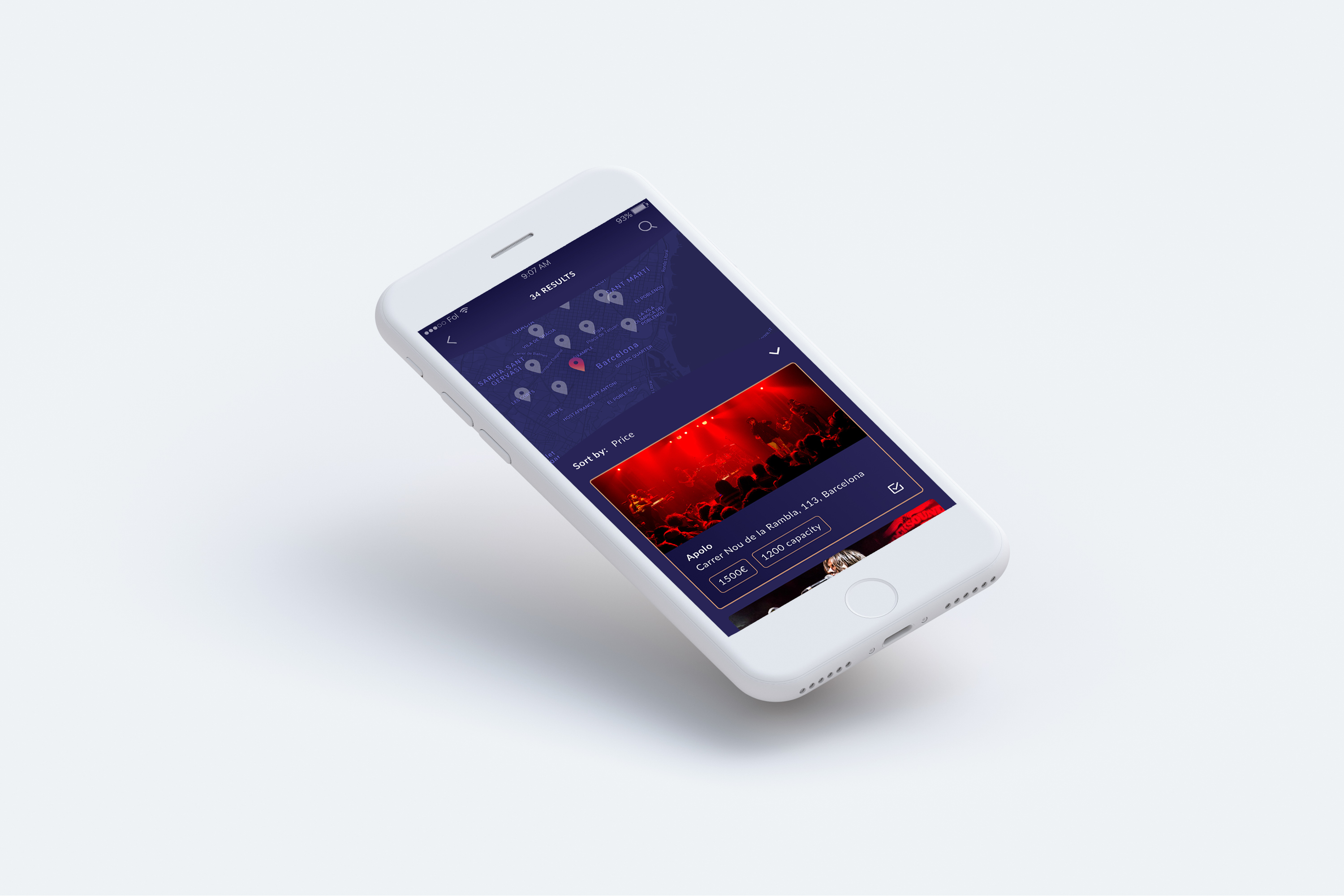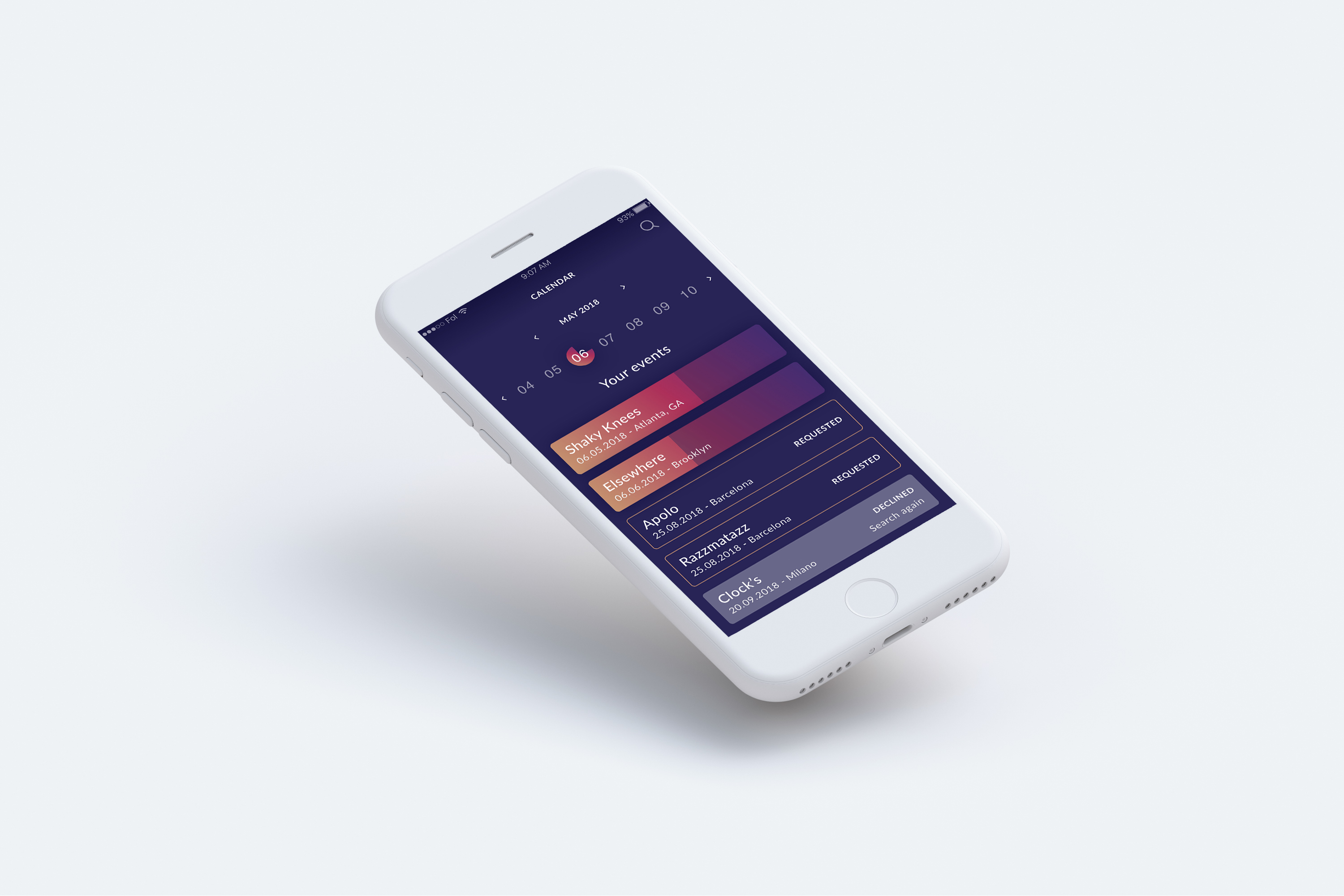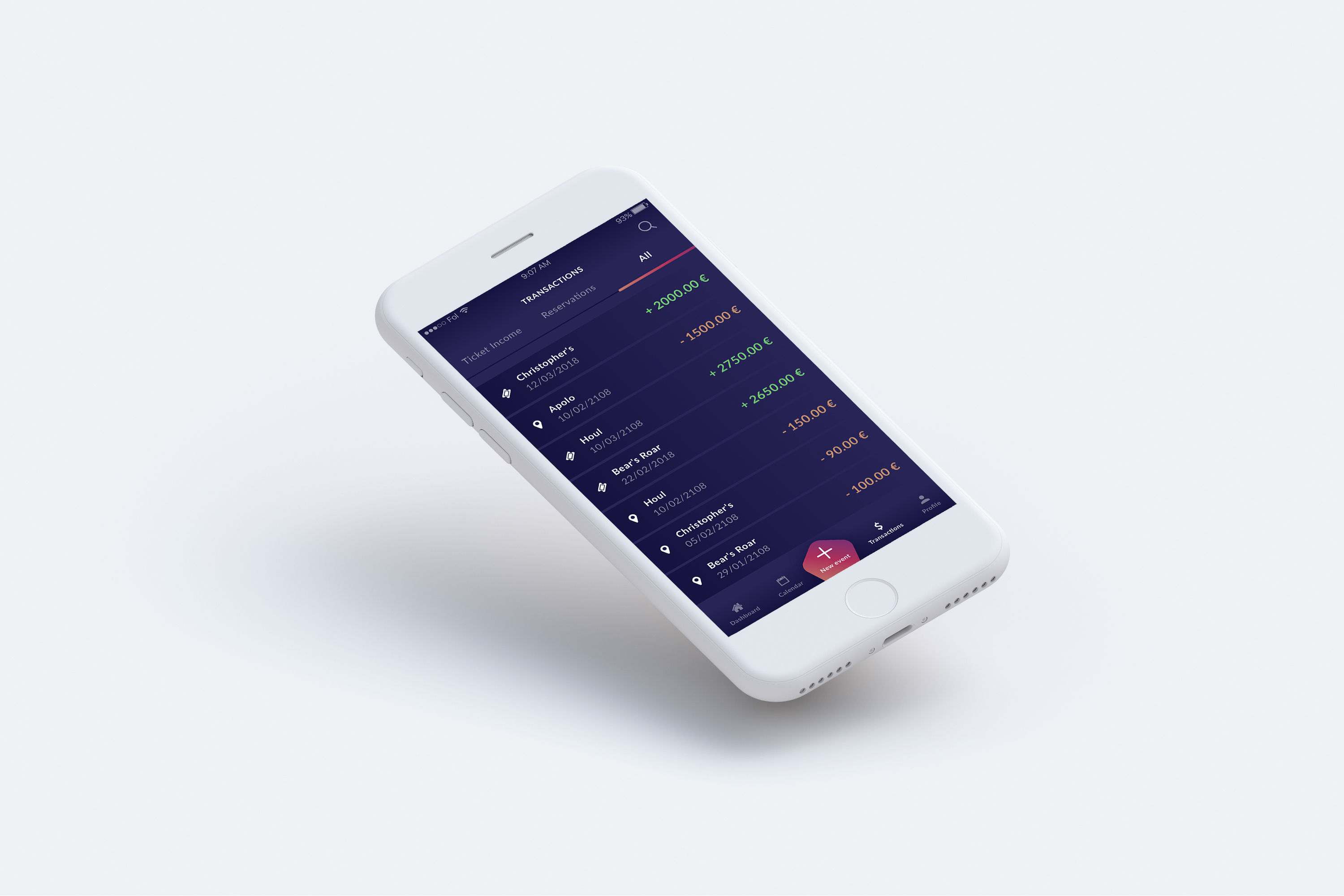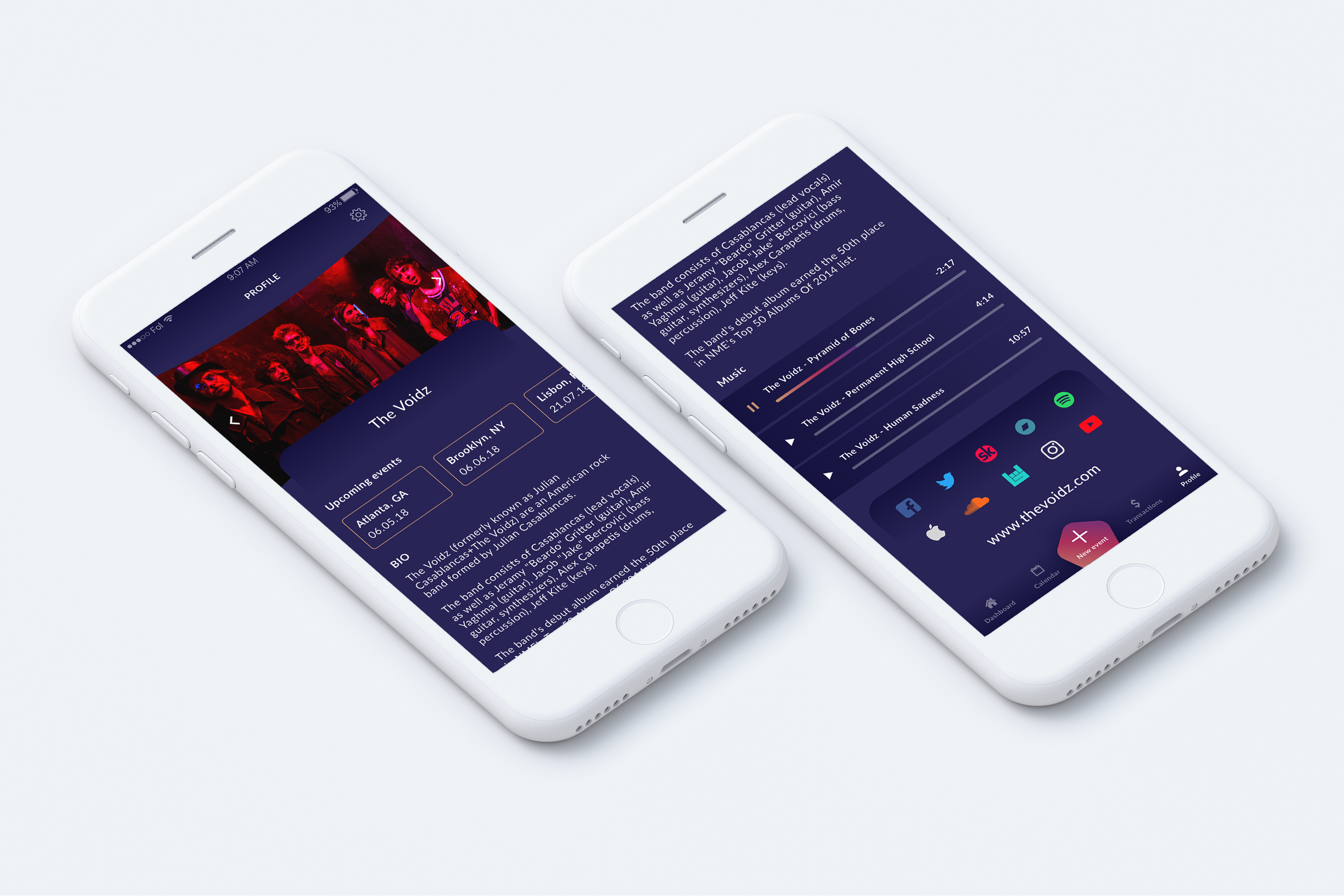Role: Principal Product Designer
Project Type: B2C mobile app (MVP)
Scope: End-to-end design (UX research, strategy, IA, wireframes, testing, UI)
Duration: 6 months
Tools: Figma, Maze, Marvel, Miro
🧠 The Challenge
How can we help emerging musicians, who lack resources, visibility, and support, organise profitable live shows and grow their fan base?
While music streaming is accessible, gigging remains inaccessible and risky for new artists. They often face:
-
Empty venues
-
Financial losses
-
Booking complexities
-
Limited label support
-
Low visibility despite fan interest
I set out to design a product that flips the equation, making it easier for artists to book shows, sell tickets, and engage fans directly—with everyone winning in the process.
🔍 Discovery & Research
🧑🎤 Stakeholder Interviews
To uncover pain points from all sides of the live music ecosystem, I conducted 32 in-depth interviews with:
-
17 musicians (emerging to established)
-
6 independent labels
-
5 venue owners
-
4 fans who attend >2 shows/month
I also developed separate interview guides for artists and labels. Key research questions included:
-
“What barriers prevent you from organising live shows?”
-
“What’s your current booking and promotion process like?”
-
“What would make it easier to grow your local fan base?”
🧭 Key Insights
Using Affinity Mapping, Mind Maps, and Empathy Maps, I uncovered five key insights:
-
Emerging artists fear playing to empty rooms.
-
They’re ignored by venues unless they already have a following.
-
They rely heavily on friends and social media to promote shows.
-
They’ll play for free if it means visibility, but it’s unsustainable.
-
Fans want to help, but lack incentives or tools to do so.
💡 Product Strategy
✨ Vision
Design a mobile platform that helps artists book venues, manage shows, and turn fans into ticket promoters—all within one simple flow.
🔄 Artist–Venue–Fan Loop
BeastGig is built around a three-sided marketplace:
-
Artists can search, book, and promote shows.
-
Venues receive filtered booking requests.
-
Fans earn rewards by promoting shows they love.
💸 Each ticket sale generates 10% commission for the fan who shared it. Artists keep 90%.
🧱 Information Architecture & Core Flows
Core Actions (Artists):
-
Create profile (Spotify, Bandcamp, Soundcloud, or manual)
-
Filter venues by date, capacity, price, and backline
-
Send multiple booking requests (first confirmed = final)
-
Set up ticket sales & share the promotional link
-
Track event and income status in real-time
Core Actions (Fans):
-
Discover shows nearby
-
Share event links with friends
-
Earn a cut from ticket sales
Validated Features:
-
Transparent income breakdown
-
Dynamic ticket share links
-
Booking conflict safeguards
-
Calendar with colour-coded status
-
Fan leaderboard for sales impact
🧪 Testing & Iteration
Round 1 (Low-Fidelity Prototype)
I tested 5 flows with 5 real musicians:
-
Book a new gig → ✅ 5/5 completed
-
Transfer income → ❌ 2/5 completed
-
Update bank details → ✅ 4/5 completed
-
Check next event → ✅ 5/5 completed
-
Share a gig on social media → ❌ 3/5 completed
Key Improvements:
-
Simplified income section
-
Removed duplicate UI elements
-
Clarified “sales boosters” feature
-
Moved from top tab to bottom nav for consistency
Round 2 (Mid-Fidelity Prototype)
Re-tested with the same users after UI improvements:
-
Task success increased by 33%
-
Time-to-completion reduced by 41%
-
Reported confidence increased from 3.1 to 4.7 (of 5)
🎨 UI Design
Visual Language
I developed a brand that reflects indie nightlife:
-
Dark-themed palette with neon accents
-
Atomic design system for scalability
-
Custom icon set for musical context
Artist Dashboard Highlights:
-
Upcoming shows at a glance
-
Booking prompts when the calendar is empty
-
Weekly inspirational quotes from real musicians
Add a Gig Flow:
-
CTA for adding events
-
Filter venues by technical specs
-
See venue cards with up-front info
-
Book with 1 click, auto-notified on acceptance
Event Page:
-
Real-time ticket sales tracker
-
Unique referral link per fan
-
List of top ticket-promoting fans
📊 Outcomes & Impact
🚀 Launched MVP in closed beta with 40+ emerging artists across 3 European cities.
📈 Key Results (in first 60 days):
-
74 gigs created with 68% booking success
-
>300 tickets sold through fan links
-
Avg. artist income per show: €245
-
88% of users reported they’d “highly recommend” BeastGig to other musicians
-
92% of artists said the platform made gigging “less stressful and more transparent”
👣 Next Steps
-
Expand fan engagement features (e.g. loyalty tiers, ticket bundles)
-
Enable venue profiles to include past artists & equipment lists
-
Integrate Stripe for smoother payouts and better financial reporting
-
Launch the fan discovery feed for events trending in their city
👋 Final Thoughts
Designing BeastGig reminded me how powerful good product thinking can be when solving deep, emotional, real-world problems. This project combined business strategy, human-centred research, and experience design in a way that felt both creatively fulfilling and socially impactful.
As a Principal Designer, I led the product vision from scratch and ensured all sides—artists, fans, and venues—were heard, understood, and excited about what we built.
